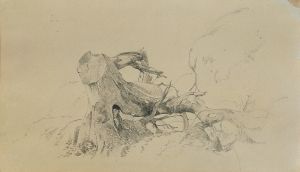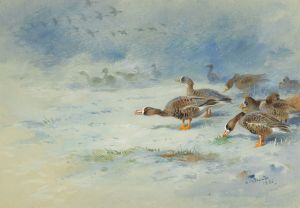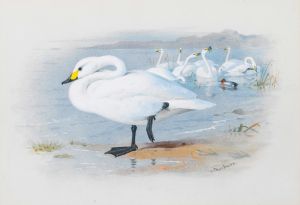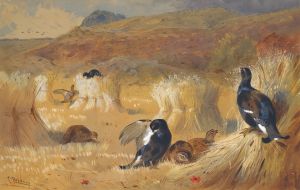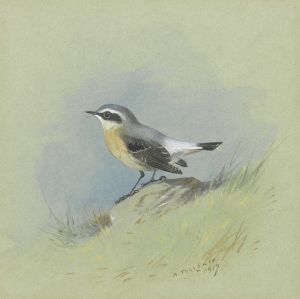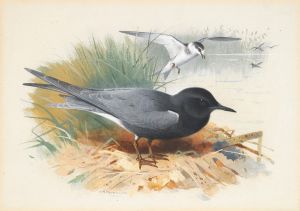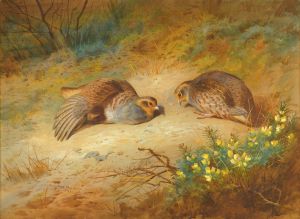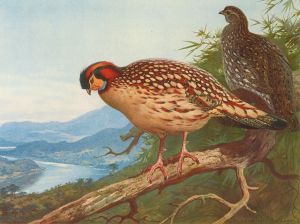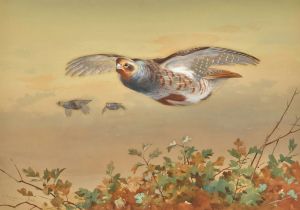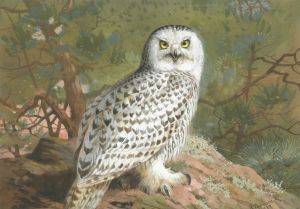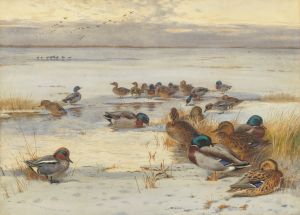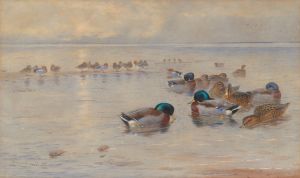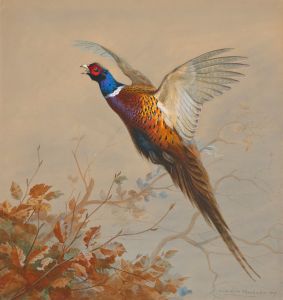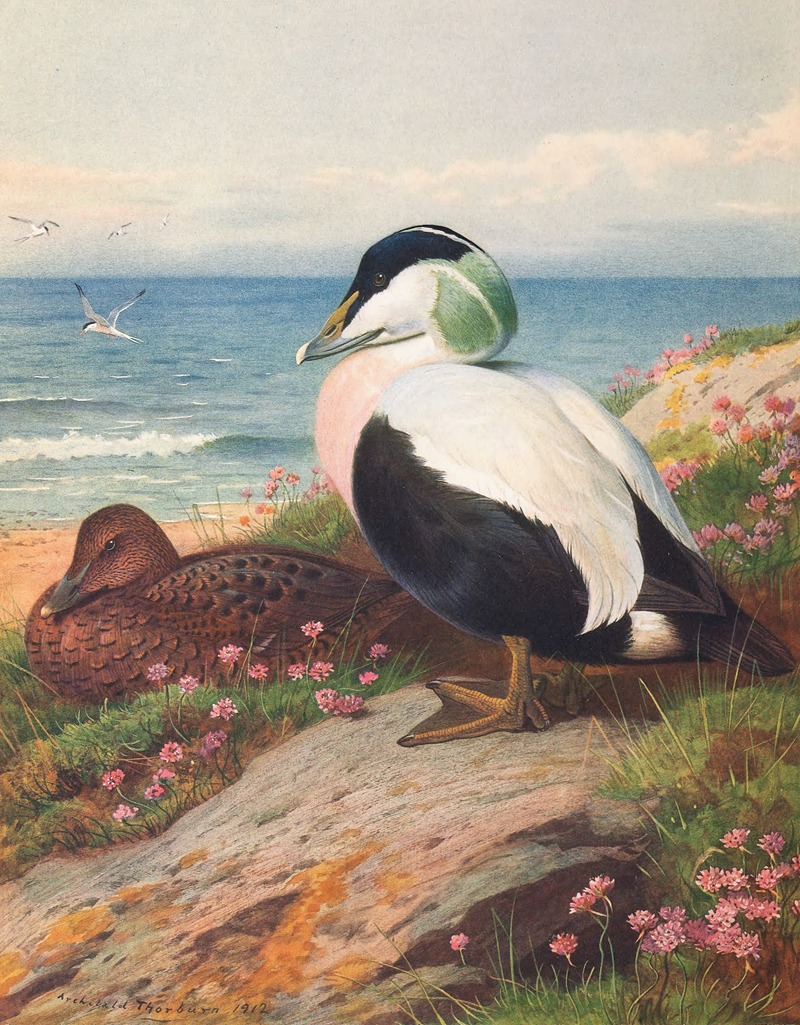
Eider Duck
A hand-painted replica of Archibald Thorburn’s masterpiece Eider Duck, meticulously crafted by professional artists to capture the true essence of the original. Each piece is created with museum-quality canvas and rare mineral pigments, carefully painted by experienced artists with delicate brushstrokes and rich, layered colors to perfectly recreate the texture of the original artwork. Unlike machine-printed reproductions, this hand-painted version brings the painting to life, infused with the artist’s emotions and skill in every stroke. Whether for personal collection or home decoration, it instantly elevates the artistic atmosphere of any space.
Archibald Thorburn (1860–1935) was a Scottish artist renowned for his exceptional wildlife paintings, particularly of birds. His work is celebrated for its meticulous detail and vibrant depiction of natural scenes. One of his notable works is "Eider Duck," which exemplifies his skill in capturing the essence of avian subjects in their natural habitats.
"Eider Duck" is a painting that showcases Thorburn's ability to render birds with lifelike precision and a sense of vitality. The eider duck, known for its distinctive appearance and association with coastal environments, is depicted in a manner that highlights its unique features. Thorburn's attention to detail is evident in the intricate patterns of the duck's plumage and the careful rendering of its environment, which often includes elements such as water, rocks, and vegetation typical of the eider's natural setting.
Thorburn's approach to wildlife art was heavily influenced by his commitment to observing animals in their natural surroundings. He often traveled to remote locations to study his subjects firsthand, which allowed him to portray them with a high degree of accuracy and authenticity. This dedication to field observation is reflected in "Eider Duck," where the bird is presented in a realistic and dynamic pose, capturing a moment in its daily life.
The painting is also notable for its composition and use of color. Thorburn was adept at using color to enhance the realism of his subjects while also creating a harmonious balance within the composition. In "Eider Duck," the subtle variations in the bird's plumage are complemented by the natural tones of the background, creating a cohesive and visually appealing image.
Thorburn's work, including "Eider Duck," played a significant role in the popularization of wildlife art during the late 19th and early 20th centuries. His paintings were widely appreciated for their artistic merit as well as their educational value, providing viewers with a window into the natural world. Thorburn's ability to combine scientific accuracy with artistic expression made his work highly sought after by collectors and nature enthusiasts alike.
In addition to his artistic achievements, Thorburn was also involved in conservation efforts, using his art to raise awareness about the importance of preserving wildlife and their habitats. His paintings often served as a reminder of the beauty and diversity of the natural world, encouraging a greater appreciation and respect for the environment.
Overall, "Eider Duck" by Archibald Thorburn is a testament to the artist's skill and dedication to wildlife art. It reflects his passion for nature and his ability to capture the intricate details of his subjects with both scientific precision and artistic flair. Through works like this, Thorburn has left a lasting legacy in the field of wildlife art, inspiring future generations of artists and nature lovers.





